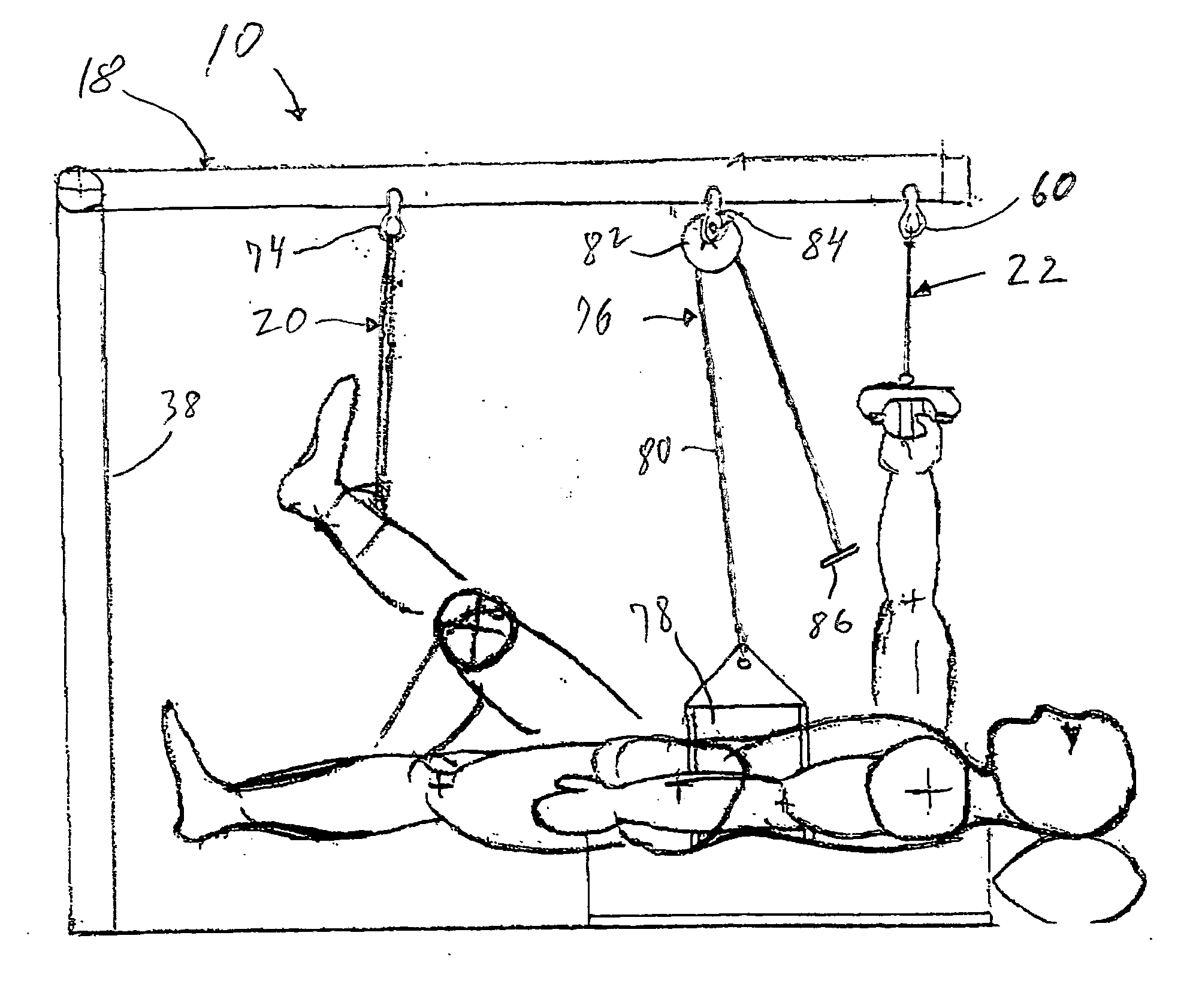Self-exercise device for limited mobility patients and method of exercise
a self-exercise device and limited mobility technology, applied in the field of self-exercise devices for limited mobility patients, can solve the problems of inability to provide a suitable and attractive solution to these problems and disadvantages, and the prior devices have not been found completely suitable for proper self-exercise by patients who are partially or fully, so as to improve self-exercise ability, improve self-exercise skills, and promote mobility through the spine and extremities.
- Summary
- Abstract
- Description
- Claims
- Application Information
AI Technical Summary
Benefits of technology
Problems solved by technology
Method used
Image
Examples
Embodiment Construction
[0012] In the drawings FIG. 1 illustrates generally at 10 the self-exercise device of a preferred embodiment of the invention. Device 10 is shown in use for self exercise by a patient 12 in supinated position on a bed 14. The device can also be used by patients sitting in wheelchairs or the like.
[0013] Self-exercise device 10 is comprised of a mobile platform 16 which carries a support frame 18 from which one or more strap units 20, 22 are suspended over the patient.
[0014] Mobile platform 16 is comprised of a pair of horizontal, spaced-apart support tubes24, 26 from which a plurality, shown as four, of wheels 28, 30 are mounted. The wheels can be provided with suitable locking devices, not shown, which when engaged resist movement of the platform when the device is in use. An upright tubular support 32 is mounted near one end of the platform, and this support comprises a pair of vertically spaced horizontal tubular cross beams 34, 36.
[0015] Support frame 18 is comprised of a vert...
PUM
 Login to View More
Login to View More Abstract
Description
Claims
Application Information
 Login to View More
Login to View More - R&D Engineer
- R&D Manager
- IP Professional
- Industry Leading Data Capabilities
- Powerful AI technology
- Patent DNA Extraction
Browse by: Latest US Patents, China's latest patents, Technical Efficacy Thesaurus, Application Domain, Technology Topic, Popular Technical Reports.
© 2024 PatSnap. All rights reserved.Legal|Privacy policy|Modern Slavery Act Transparency Statement|Sitemap|About US| Contact US: help@patsnap.com










